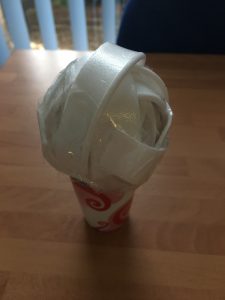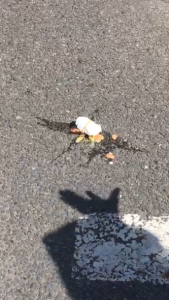Embrace the egg…my final weeks
My time at the RHN has sadly reached its end but I know this isn’t the end for my project.
During the 3rd week I spent my time putting together a presentation for primary schools where I had to channel my inner child. I found it quite difficult explaining such a serious disability in terms that children could understand while still making the presentations enjoyable. I found some resources online from charities that help explain neuro-disability to young children so that they can better understand the condition when it affects a loved one. To make the presentations interactive I came up with a few props and experiments including a ‘brain box’ that will be used to explain the touch sense to the children (as you can see I’m very proud of my box) and a jelly bean taste experiment to highlight the importance of the smell sense.

The last week was spent adding the finishing touches to my presentations and collating information on local primary and secondary schools that I am going to contact with regards to my project. Unfortunately schools have broken up for the summer so it’s been difficult to get in contact with them but I’ll keep trying and hopefully in September I’ll have more schools interested in my project.
My last day at the RHN was filled with cake and eggs (odd mix I know) and was one of my favourite days there. One of the major aims of my project is to raise awareness on how vulnerable our brains are to damage and how important it is to protect them. Logically, this ended up with us making a series of different ‘egg helmets’ out of polystyrene cups and dropping the eggs in the car park to show what a massive difference wearing a helmet can make (tragically only 3/7 of the eggs survived).
I think it’s fairly obvious which prototype survived.
Working with the people at the RHN and seeing the amazing difference they make to people’s lives was one of the best experiences I could’ve asked for, I’ve learnt so much about the brain and how much we take it for granted and I really hope my project will benefit the charity.


